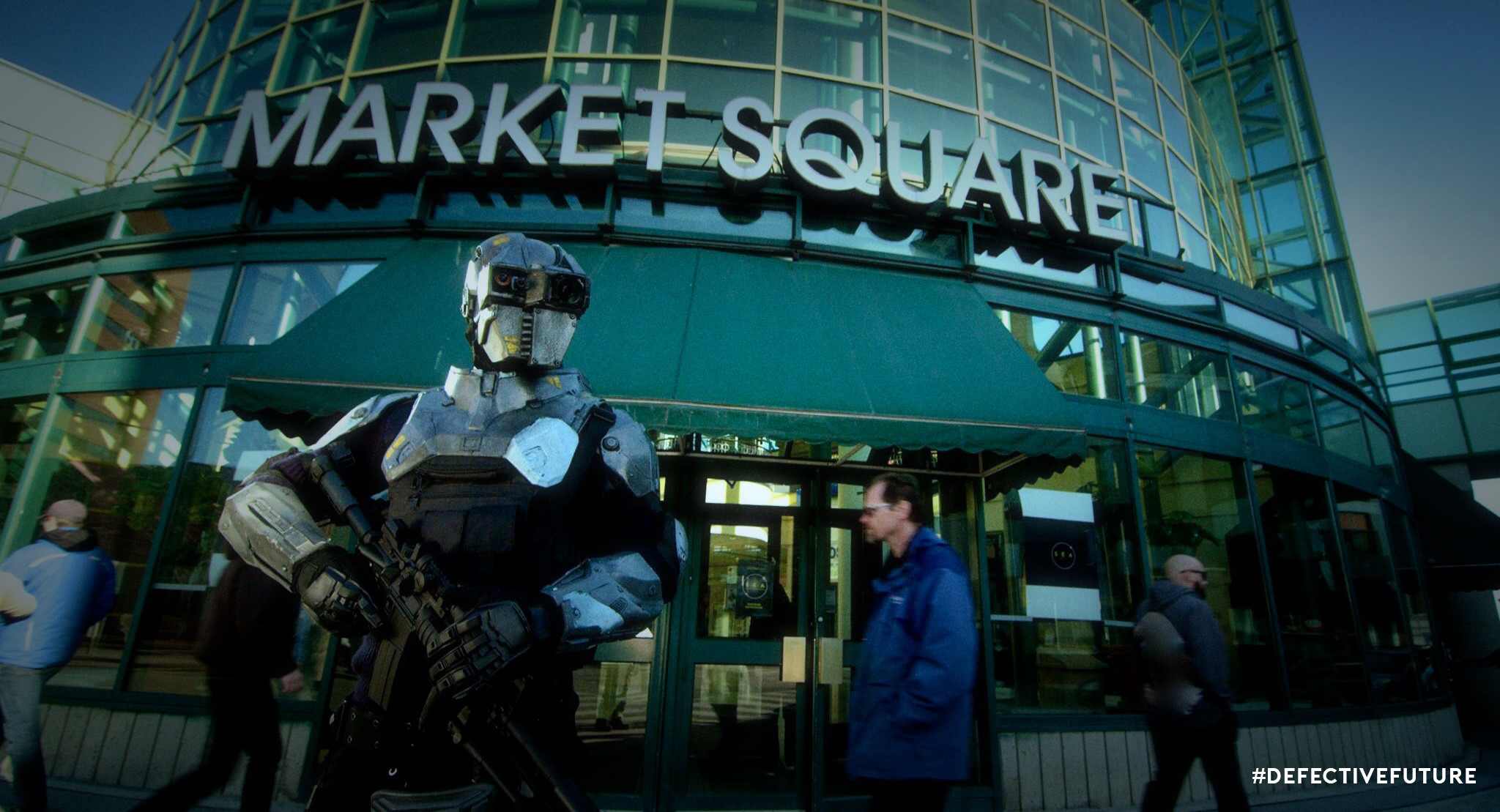In a world where law enforcement is encased in armour, escaping even as a mistaken convict is proven to be dangerously risky. Now currently in post-production, Defective is looking forward to an incredible future of release. Producer Peter Szabo took some time to answer some questions regarding the experience of shooting the film.
HNMAG : How did you find your shooting locations?
Peter : That’s a complicated one, because we have 30+ locations. Finding locations was a combination of asking other filmmakers in our network, and some of them were found just literally driving around looking for the right look. Then we would sort of make a list of those and we’d then have to locate who owned those properties, contact them if we could get permission, and go through that process.
HNMAG : How was the film production financed?
Peter : All private funding. So we reached out to a network of friends and filmmaking contacts, family. We arranged the financing to be a series of loans, so the idea is that we’ll pay them back, with interest. Plus adding some percentage to the profits.
HNMAG : So what was it like shooting the film? Were there any challenges on set?
Peter : Many challenges. Interestingly, we only had one really bad rain day, so for exteriors we had one day that was a very significant action scene, and we were completely rained out. We were fortunate that the location let us stay an extra couple of days so we could finish that filming. We had an actor that quit on us in the middle of production, so then we had to end up reshooting a couple of the scenes with a new actor and had to rejig our schedule. Fortunately, we didn’t have any injuries or anything of that nature. We had a light break here and there, so we’d pull in a favour and have somebody drive and pick up a light from Hamilton. Fairly typical things, like running out of time, props, or special effects not always working the way we want them to and having to reset them.
HNMAG : What was the best part of shooting the film?
Peter : Since I served as a line producer and a first assistant director, the best part was watching the actors bring to life something I’d only seen on paper. Bringing all this to life and seeing all that I had thought up in my head or just put on paper, turn into something way more interesting and with more richer texture and more emotional residence.
HNMAG : What was the process of finding actors?
Peter : We did a casting call and held auditions, and for a couple of the key roles, when the director was writing the script he actually had actors in mind, independent actors we had already worked with on short projects. Or ones that he just saw in another local independent film in Toronto. So we reached out to them, called their agent, and made it happen.
HNMAG : How many members did the crew consist of?
Peter : On our most full days, about 20-25 cast and crew. On simple days with one actor and no audio, we could maybe get away with closer to 10.
HNMAG : Are there any sequels in mind?
Peter : It definitely lends itself to sequels, we have definitely created a world. This is only one story in that world so I think we’ll wait and see who picks it up and how many rights they purchase. I know that the writer/director will want to retain as many of the rights for the option to write any sequels. Right now, we have to wait until we are ready to sell it, and see what the distributor wants to do in terms of future.
HNMAG : What was it like working with Reese Eveneshen, the director?
Peter : He’s excellent. I’ve worked with him now for about seven years. I’m very familiar with his style now, so it was intense because he likes to get a lot of shots in, that’s how he works. Newer crew members who were not expecting or experienced with the speed he would move at were a little taken off guard and even skeptical. But I’ve worked with him long enough to trust him that whatever he needs to get on camera, he’s got every shot in his head. He and the cinematographer were very much in sync, jumping to the next setup.

